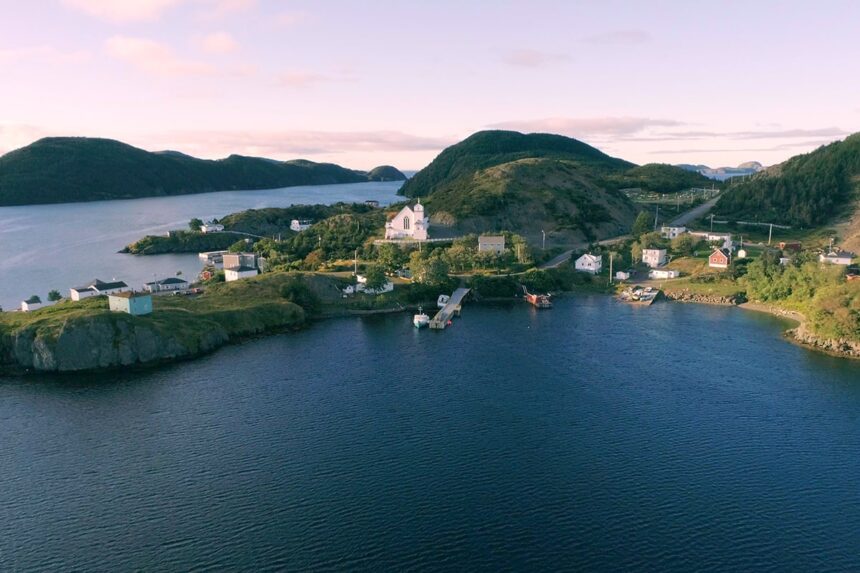The Norwegian exodus from Canada’s aquaculture industry continues with another billion-dollar deal reshaping the salmon farming landscape along our coastlines. Norway’s Grieg Seafood ASA announced Tuesday it’s selling its Canadian operations to Cermaq Canada, a subsidiary of Mitsubishi Corporation, in a transaction valued at approximately CAD $1.1 billion.
This marks the second major Norwegian retreat from Canadian waters in recent months. Last September, Mowi ASA, the world’s largest salmon producer, sold its Canadian assets to Cooke Aquaculture for $1.6 billion, citing regulatory uncertainty in British Columbia as a key factor in their decision.
The deal includes Grieg’s licenses and operations in both British Columbia and Newfoundland, with 22 farm licenses in B.C. and development rights for up to 30,000 tonnes of annual production in Newfoundland. For perspective, that’s enough salmon to feed roughly 600,000 Canadians for a year.
“The regulatory landscape in Canada has become increasingly challenging,” Andreas Kvame, CEO of Grieg Seafood, told investors during Tuesday’s conference call. “Consolidation allows for more efficient operations at a time when the industry faces headwinds from both policy direction and market conditions.”
The transaction arrives at a pivotal moment for Canada’s $1.2 billion salmon farming industry. The federal government is currently implementing its plan to transition open-net pen salmon farming out of British Columbia waters by 2029 – a move that has created significant uncertainty for operators and the coastal communities where they provide jobs.
Fisheries Minister Diane Lebouthillier’s office maintains that the transition is necessary to protect wild salmon populations while supporting coastal communities. However, the industry has pushed back, arguing that the science doesn’t support such drastic measures and that land-based alternatives aren’t economically viable at scale.
David Kiemele, Managing Director of Cermaq Canada, sees opportunity where others see challenge. “This acquisition strengthens our position to work constructively with both government and First Nations partners as the industry evolves,” he said in a statement. “We believe in the future of sustainable aquaculture in Canada, and this investment demonstrates that confidence.”
The consolidation trend isn’t unique to Canada. Global salmon farming has been consolidating for years, with the top five producers now controlling over 50% of worldwide production, according to Rabobank’s seafood industry analysis. But the Canadian situation reflects particular regional pressures.
Brian Mori, seafood industry analyst at BMO Capital Markets, points to the unique regulatory risk in Canada. “Norwegian operators are generally reducing exposure to markets with unpredictable regulatory shifts, and redirecting capital to more stable jurisdictions like Norway itself or Chile,” Mori explained in an interview. “The valuation multiple on this deal – approximately 8.5 times EBITDA – reflects that regulatory discount compared to similar assets elsewhere.”
The employment impact could be significant. Grieg currently employs approximately 350 people across its Canadian operations, while Cermaq has about 300 employees. The companies haven’t announced specific plans regarding potential workforce reductions, though consolidations typically involve some operational streamlining.
For coastal communities like Campbell River, B.C., where both companies have significant operations, the industry’s uncertainty has created anxiety. The salmon farming sector provides approximately 6,500 direct and indirect jobs in British Columbia alone, according to the BC Salmon Farmers Association, with many positions in remote communities where alternative employment is limited.
Chief Councillor Roxanne Robinson of the Kitasoo Xai’xais First Nation, which has partnerships with both Grieg and Cermaq, expressed cautious optimism about the deal. “Our priority remains ensuring that any aquaculture operations in our traditional territories are conducted sustainably and with meaningful economic participation from our community,” Robinson said. “We’ll be watching closely how this consolidation affects those commitments.”
The transaction also reveals broader shifts in seafood markets. David McEwan, commodity analyst at TD Securities, notes that while global salmon demand continues to grow at 4-5% annually, producers face mounting challenges from climate change, disease management, and increasing consumer scrutiny of environmental practices.
“What we’re seeing with these Canadian exits isn’t necessarily companies abandoning salmon farming – they’re reallocating capital to jurisdictions with clearer regulatory frameworks and better growth prospects,” McEwan explained. “For Japanese-owned Cermaq, this acquisition aligns with Mitsubishi’s long-term strategy of securing protein sources for Asian markets.”
The deal requires regulatory approvals from Competition Bureau Canada and a review under the Investment Canada Act, with closing expected in the third quarter of 2024. Grieg Seafood’s shares closed up 4.2% on the Oslo Stock Exchange following the announcement.
For Canada’s aquaculture policy, the question remains whether consolidation will lead to a more sustainable industry or simply concentrate production among fewer players operating within the same regulatory constraints. The answer will shape not just corporate fortunes but the future of coastal communities and wild salmon conservation efforts alike.






